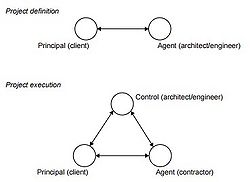Agile Methodology
Agile methodologies developed their popularity within the software development industry. Over the past 25 to 30 years agile methods helped the software and IT industry increase the productivity and success rate. Today, Agile is spreading to other fields and industries.
Contents |
Background
Why is the agile methodology important?
Introduction
Among the systems of Quality Assurance to identify the procedures of quality management, the third-party ones have now been proven to be the best practice as they follow international standards such as ISO. These systems consist of independent parties that certify the quality of a building. Thus, many independent third parties such as LEED and WELL have emerged in the last 15 years. These certifications are based on Sustainability in Construction and aim to increase the number of sustainable buildings in the world.
LEED certification provides independent verification of a building or neighborhood’s green features, allowing for the design, construction, operation and maintenance of resource-efficient, high-performing, healthy, cost-effective buildings [1].
On the other hand, WELL is a performance-based system for measuring, certifying, and monitoring features of the built environment that impact human health and wellbeing, through air, water, nourishment, light, fitness, comfort, and mind. [2].
Big Idea
Agile Vocabulary
Quality can be defined as “the degree to which a set of inherent characteristics fulfils requirements” [3]. One of the objectives of the Quality Management Systems is to make clear that non-conformance in a product is somebody’s fault. Thus, workers are encouraged, reward-based, to take responsibility when achieving high quality. There are four main basic approaches to make sure that high quality has been reached and these act as a complement rather than as an alternative:
- Inspection: physical check.
- Quality Control (QC): management control techniques.
- Quality Assurance (QA): externally accredited procedures.
- Total Quality Management: continuous process improvement.
Product Owner
The product owner is an extension of the customers. The product owner is responsible for the product backlog and have authority to change the product along the way.
Team
...
Product Backlog
...
Sprint Backlog Meeting
...
Sprint Backlog
Detailed overview of what the team is supposed to work on during the current sprint.
Scrum Master
The scrum master is the voice of the team.
Sprints
Sprints are typically 1 to 4 weeks periods. During the sprint the team works on solving the problems in the sprint backlog.
Scrum
Scrum are 24 hour periods. The team has daily scrum meetings where all team members answer the following three questions.
- What...
- ....
- ...
Sprint Retrospective
...
Application
The Right Conditions for Agile
...

| Concept | Preconditions Applicable | Preconditions Achieved | Optimizations Achieved | Optimizations Achieved | Concept Scores |
|---|---|---|---|---|---|
| Air | 12 | 12 | 17 | 3 | 5 |
| Water | 5 | 5 | 3 | 0 | 5 |
| Nourishment | 8 | 8 | 7 | 6 | 9 |
| Light | 4 | 4 | 7 | 2 | 6 |
| Fitness | 2 | 2 | 6 | 3 | 7 |
| Comfort | 5 | 5 | 7 | 2 | 6 |
| Mind | 5 | 5 | 12 | 12 | 10 |
| Total | 41 | 41 | 59 | 29 | 7 |
Limitations
Annotated Bibliography
- Winch, G. M. (2010). Managing Construction Projects. Iowa: Blackwell Publishing Ltd.
Provides a focused perspective on the role of people involved in construction, especially on project management. One of its approaches is the quality of conformance to requirements, not only product related but also process related. To reach this conformance, quality management systems are used, thus Winch explains further and in detail the different systems that exist. It also provides some Case Studies where the theory is made clear by using real-life examples.
- Arthur, B. (2017). The Difference between Quality Assurance and Quality Control. Retrieved from https://www.dialog.com.au/open-dialog/the-difference-between-quality-assurance-and-quality-control/
Describes the characteristics of Quality Assurance and Quality Control, and explains the connection and differences between both. They are considered to be strategies applied at different stages of the project, and Arthur describes this in a very clear way. It also discusses the benefits of applying these strategies at the right moment.
- LEED, U. G. (2017). Leadership in Energy and Environmental Design. Retrieved from http://leed.usgbc.org/leed.html
Shows a very detailed overview of the LEED Certification, including its meaning, the reasons to and benefits from choosing LEED, the people that should be involved in the project, categories, steps to follow and more. It serves as a good introduction to the certification and further information can be found in the different sections of type of certified buildings.
- IWBI. (2017). The WELL Certification Guidebook. New York
Guides the user through all the steps that are to be followed to get the WELL certification. It dives into the Project Team’s roles, the documentation requirements, performance verification and the final report. It allows the reader to have a clear picture of how to achieve the award and continue with the health engagement in the future.
References
- ↑ LEED, U. G. (2017). Leadership in Energy and Environmental Design. Retrieved from http://leed.usgbc.org/leed.html
- ↑ Knox, N. (2015). WELL Building Standard. U.S. Green Building Council. Retrieved from http://www.usgbc.org/articles/what-well
- ↑ 3.0 3.1 Winch, G. M. (2010). Managing Construction Projects. Iowa: Blackwell Publishing Ltd.
- ↑ IWBI Standard. (2017).The WELL Building Standard. Retrieved from https://standard.wellcertified.com/